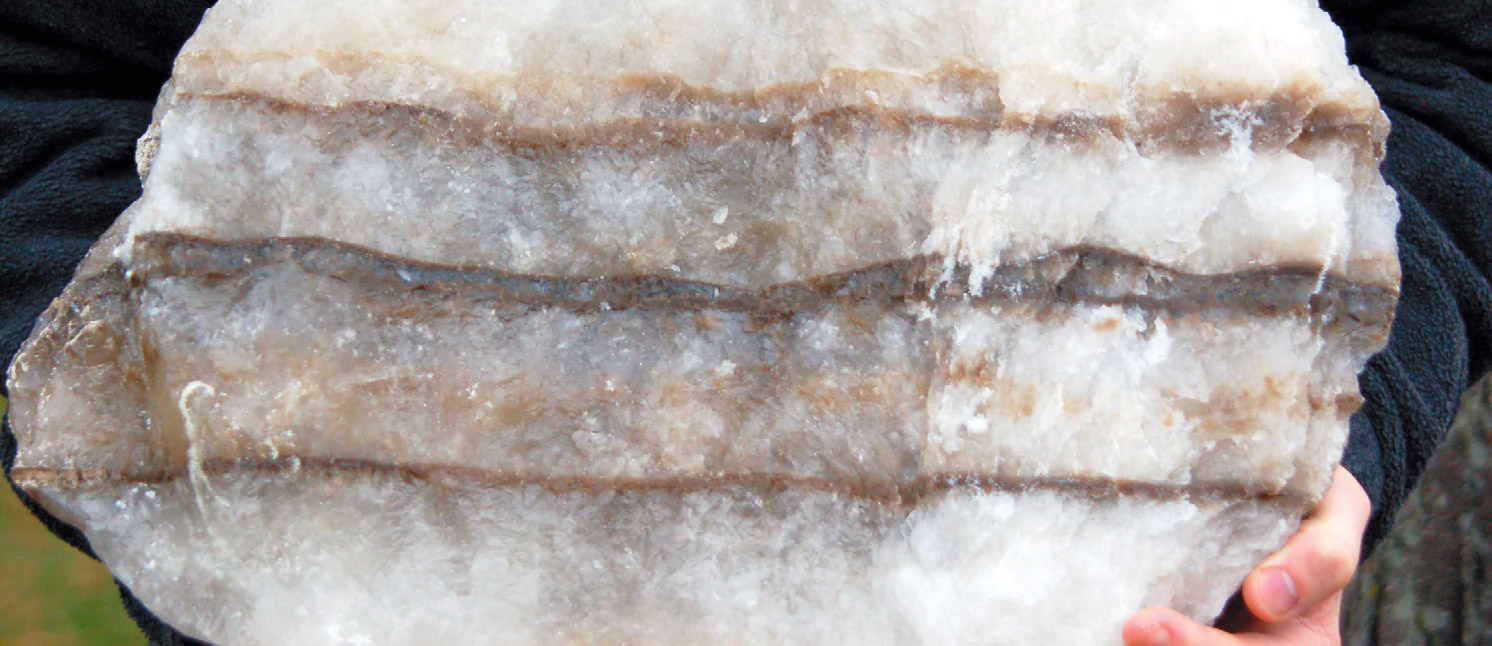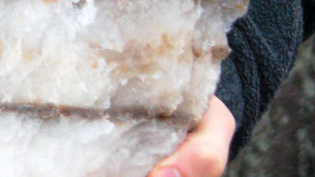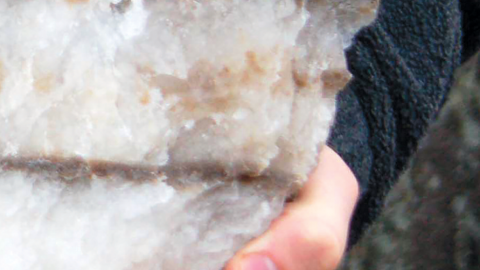Salt: An Ancient Gift from the Inland Seas
I am a secret ingredient but I hide in plain sight. I have no flavor myself but my presence makes others taste better. I am hard as a rock but defeated by water. What am I?
I am salt.
Salt that is required by much of the animal life on earth, reflecting the briny depths from which it evolved. Salt needed for the delicate balance of human health: to keep nerves transmitting, muscles moving and fluids flowing. Salt that has been valued as currency and protected as national treasure; that has been offered to ward off evil, bring blessings to the home and purify negative energies. Salt of the earth and salt of the sea.
MICHIGAN SEA SALT
Another question is simpler: From what single source does all salt come?
Salt comes only from seawater, but in one of two forms—either oceans now present or ancient oceans, dead and dried. One of the world’s largest rock salt reservoirs is spread throughout what is known geologically as the Michigan Basin—a depression within the Great Lakes Basin larger than the current Lower Peninsula and once surrounded by giant reefs. Between 600 and 230 million years ago this basin flooded repeatedly with seawater which, trapped by the reefs, evaporated, leaving both deep salt deposits and room for another intake of brine to repeat the process. Layer by layer, over roughly 350 million years, the salt beds grew.
In the times between then and now, rocks, minerals and soils settled over the salt and were moved around by glaciers into the land formations we see today. What we know as Michigan’s Lower Peninsula sits on top of at least 30 trillion tons of salt in deposits ranging from 200 to more than 1,000 feet deep and coming as close as a quarter mile to the surface.
MINING AND BRINING
In the early 1900s Michigan was the leading salt producer in the country. Production happened in two ways—dry mining and solution mining, or brining. The salt mines of Detroit are dry mines of vast scale 1,200 feet beneath the surface; 100 miles of tunnels now filled with roads, chambers and heavy equipment. Salt is crushed and raised through shafts in buckets capable of holding nine-ton loads.
Brining mines, like those in the Thumb and near Manistee, instead harvest salt using a wet method. Hot water is sent down shafts to the salt and the salty brine is pumped out and evaporated. In the late 1800s this method was a perfect adjunct to the lumbering industry, and many lumber barons in the Manistee area dug mines and evaporated brine by burning the scraps from their sawmills. Manistee became know as “Salt City of the Inland Seas,” producing over a million barrels of salt a year and developing a side industry for healing salt baths. Once the old-growth forests were decimated and business slowed, most salt mines were abandoned as well; however, in Manistee the Morton Salt Company still operates the mines it purchased in 1930.
SALT, SALT EVERYWHERE; NARY A BIT TO EAT
Despite the wealth of salt beneath our feet, Michigan salt companies currently only produce commercial grades of salt to be used in industry and road de-icing. We in Michigan must import our culinary salts like almost everyone else. Fortunately (from a locavore’s perspective), salt, like spices, has a low carbon footprint in its shipment and packaging, and a world of variety can be had for relatively little money.
Here I’ll note that my own favorite everyday salt is from Utah, and I first discovered it as a large, beautiful, red rock salt lick for my donkeys. Holding that rock in my hands was when I first grasped the fact of the ancient seas that once covered the earth. I would knock off a chunk and grind it up for my personal use—until I discovered Redmond Salt was available from my grocer. Redmond salt was how I learned that unprocessed salt could have flavor beyond its salty taste; by contrast, white salt just tastes bitter and harsh.
There are several categories of culinary salt to know. Table salt is purified, ground, and includes anti-caking materials and sometimes important added nutrients such as iodine. Sea salt is evaporated from seawater and may be of commercial grade or artisanal quality. Specialty salts come from site-specific sources around the world—such as Redmond in Utah, Murray River pink salt or Hawaiian black lava salt—and have different colors and mineral content. Kosher salt is coarse purified salt without additives. Flavored salts are made with culinary additions to be used as condiments.
COOKING WITH SALT
It’s sometimes said that the big reason restaurant food tastes so good is the generous use of salt. Chefs know the power of salt to enhance flavor and they use it well. Many adhere to the concept of layering with salt—that salting in each step of a dish builds flavor more than salting all at the beginning or end would do.
Finishing salts are those with the finest flavors and desired texture for seasoning and might best be thought of as a condiment to be used when the cooking is finished—at plating or at the table. The not-quite-dissolved grains provide little bursts of flavor and savoriness in counterpoint to the food it dresses. Salts flavored with herbs and spices are also a delicious way to deliver a fine finishing touch. There’s hardly a dish that finishing salts can’t improve—side vegetables, salads, eggs, potatoes, meats—and even, with the lightest touch, certain creamy or chocolate desserts.
So appreciate your salt; season to taste. And maybe someday we’ll be able to buy a local salt for our tables—Michigan Silver perhaps, with notes of pine, a hint of Petoskey stone in the finish, tasting of the Inland Seas.
FLAVORED SALTS AT HOME
There are infinite possibilities of flavor combinations when you make your own salt. Wet or dry ingredients can be crushed and blended in the salt base of your choice and dried gently in the oven. A rule of thumb is to add 2 or 3 teaspoons of seasonings per quarter cup of salt. For first attempts, try flavors you might use often on vegetables, eggs or soups.







